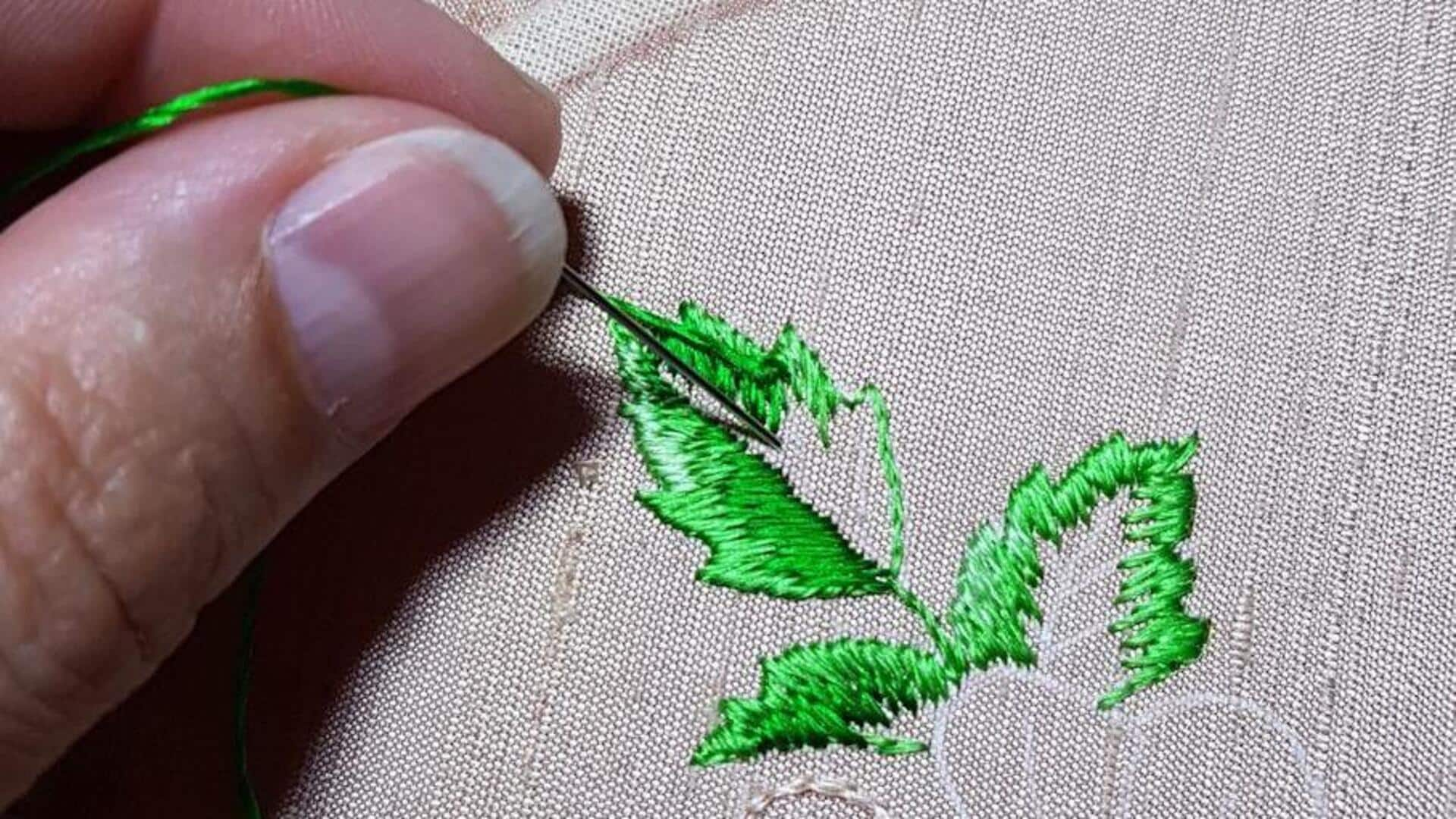
Silk embroidery made easy: A beginner's guide
What's the story
Silk embroidery is a traditional craft of decorating fabric with silk threads. The art has been practiced for centuries and is characterized by intricate designs and vibrant colors. For beginners, silk embroidery can make a rewarding hobby where creativity and skill can flourish. Here's what you need to know about the basics of materials, techniques, and patterns to get started on this artistic journey.
Materials
Choosing the right materials
Choosing the right materials is key in silk embroidery. As a beginner, you can start with basic essentials such as silk threads, needles, and an embroidery hoop. Silk threads are available in a variety of shades, giving you a vast selection of colors to choose from for your designs. An embroidery hoop keeps the fabric taut while you stitch it, ensuring perfection in your work.
Stitches
Basic stitches to learn
Learning Resolution to learn silk embroidery should start with learning basic stitches. Commonly used stitches are satin stitch, backstitch, and French knots. Each of them has a different role to play in creating texture, and detail in a design. Practicing the stitches on a scrap can help you get confident before you move on to the actual work.
Patterns
Selecting patterns for practice
Picking out simple patterns in the beginning can make your learning less overwhelming as a beginner. Floral motifs or geometric shapes make for great starters. They let you practice different stitches without it being too complicated. Once you get the hang of it, you can gradually make your way to more detailed designs. These test your expanding skills.
Tips
Tips for successful embroidery projects
To make your silk embroidery projects a success, keep the tension consistent while stitching to not pucker the fabric. Clean your hands regularly to avoid oils getting transferred onto delicate silks. Also, take breaks during long sessions to rest your eyes and hands. This helps keep your focus and precision intact throughout your work.